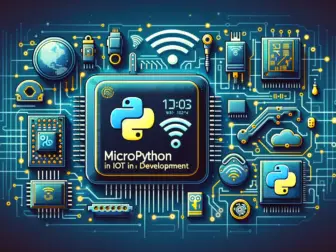Tag - applications of MicroPython
Exploring the Diverse Applications of MicroPython
MicroPython, a lean and efficient implementation of the Python 3 programming language, is increasingly being utilized across various industries and applications. One of the key advantages of MicroPython is its ability to run on microcontrollers with limited resources, making it an ideal choice for embedded systems and IoT devices. The simplicity and ease of use of Python combined with the fast execution speed of MicroPython make it a powerful tool for developing a wide range of applications.
One of the most popular applications of MicroPython is in the field of robotics. MicroPython’s lightweight footprint and high-level programming language capabilities make it an excellent choice for programming microcontroller-based robots. From simple line-following robots to more complex autonomous drones, MicroPython provides a flexible and efficient platform for developing robotic applications.
MicroPython is also widely used in the development of IoT devices. Its small size and low memory requirements make it well-suited for running on resource-constrained devices such as sensors and actuators. By leveraging MicroPython’s extensive library of modules, developers can easily connect their IoT devices to the cloud and create sophisticated IoT solutions.
Another popular application of MicroPython is in the field of home automation. With the rise of smart home devices, MicroPython provides a simple and efficient way to program and control various home automation systems. From controlling lights and thermostats to monitoring security cameras and door locks, MicroPython enables developers to create custom automation solutions tailored to their specific needs.
MicroPython is also making its mark in the education sector. Its easy-to-learn syntax and interactive REPL (Read-Eval-Print Loop) shell make it an excellent choice for teaching programming to beginners. By using MicroPython, educators can introduce students to the world of programming and electronics in a fun and engaging way, sparking their interest in STEM fields.
Overall, the applications of MicroPython are vast and diverse. Whether it’s in robotics, IoT, home automation, or education, MicroPython provides a versatile platform for developing a wide range of applications. As the demand for embedded systems and IoT devices continues to grow, MicroPython is poised to play a key role in shaping the future of technology.
